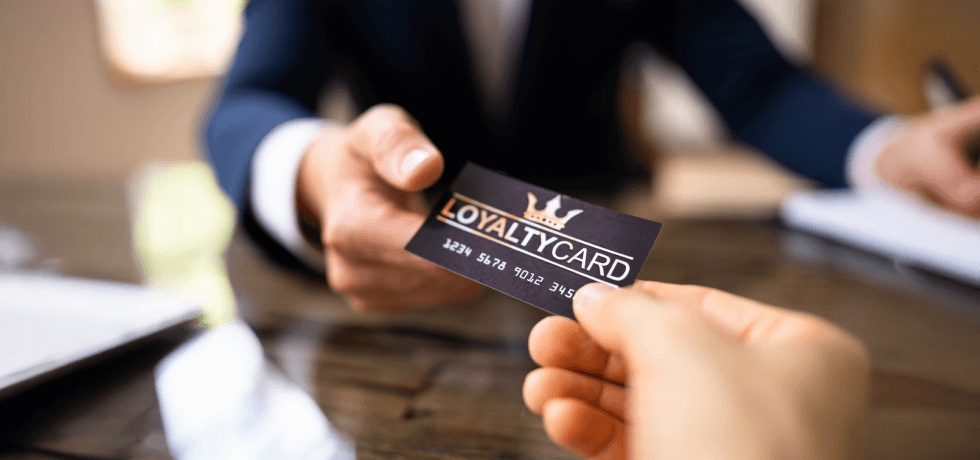
Ever notice how customers keep coming back to their favorite brands, even with new options popping up daily? It’s not just about having a great product anymore — it’s about building a rewarding relationship. Loyal customers spend about 67% more than new ones, which highlights the importance of having a strong loyalty program in place.
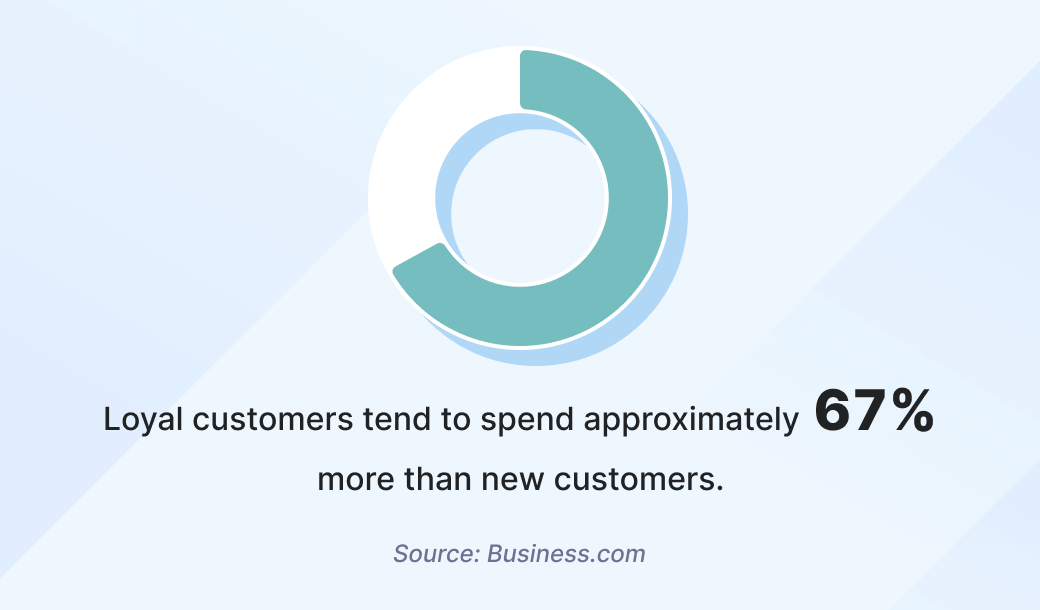
Loyalty programs have shifted from a “nice-to-have” feature to a necessity. They encourage repeat purchases, increase brand awareness, and accelerate company growth.
This article will showcase 12 real-life loyalty program examples across different industries. By the end, you’ll get a clear picture of how to reward customers in a way that boosts retention.
Let’s begin with the fundamental question.
What is a loyalty program?
A loyalty program is a structured reward system designed to give customers perks and incentives for sticking around with a brand. It’s how brands say, “Hey, thanks for choosing us — here’s a little something extra.” The purpose? To make customers feel valued, encourage repeat purchases, and build lasting relationships that go beyond a single sale.
The following types of loyalty programs offer unique ways to build customer loyalty and satisfaction. Here’s how they work.
- Point-based models allow customers to earn points for each purchase, which they can redeem for discounts, products, or special rewards.
- Tiered programs have different levels. The more a customer spends or engages, the higher they climb in the program, unlocking better rewards as they go.
- Cashback programs are pretty straightforward. Customers get a percentage of their purchase back, usually as store credit or direct cash rewards.
- Subscription-based models are used in digital and lifestyle brands, where customers pay a membership fee to access exclusive benefits, discounts, or premium content.
Loyalty programs pack a serious punch in terms of business growth. Studies show that loyal customers are worth up to 10 times as much as their first purchase. Plus, loyalty program members are known to spend 12-18% more than other customers, making these programs a direct line to increased revenue and retention.
12 loyalty program examples across industries
Loyalty programs are shaped by what customers value most and how they engage with a brand. Here’s how each industry fits these unique needs.
Retail loyalty program examples
1. Starbucks Rewards

Image source: starbucks.cz
Members earn Stars with every purchase, which they can redeem for free drinks and food. The program offers various reward levels, allowing members to redeem Stars for different items. With 200 Stars, they can savor a lunch sandwich, protein box, or salad.
Why this loyalty program works
- Starbucks adds value with mobile ordering and seasonal rewards.
- The Starbucks app allows members to order ahead, pay, and earn Stars all in one place.
- It also tailors promotions and suggestions to individual preferences. For example, a customer who frequently orders lattes may receive a discount on a new latte flavor.
2. Sephora Beauty Insider
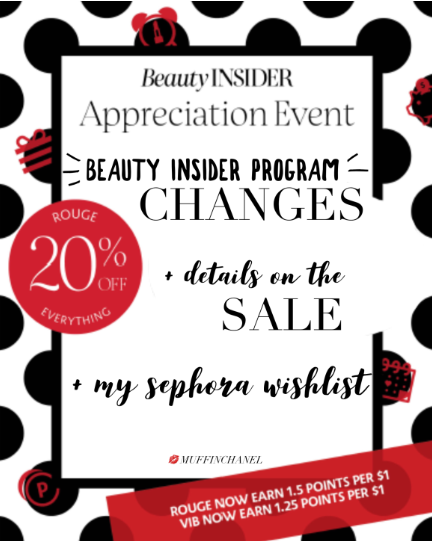
Image source: muffinchannel.com
This program offers points for every dollar spent, which can be redeemed for products or beauty experiences. Higher-tier members enjoy invitations to exclusive events, such as product launch previews and beauty classes.
Why this loyalty program works
- These benefits motivate customers to increase their engagement and spending.
- All members receive a complimentary birthday gift, with options that often include popular products.
- The tiered levels (Insider, VIB, Rouge) create a VIP experience, motivating customers to reach higher tiers for more perks.
Hospitality & travel loyalty program examples
3. Marriott Bonvoy HDFC Bank Credit Card

Image source: marriottbonvoyasia.com
Marriott Bonvoy rewards members with points for stays at over 8,000 hotels worldwide, as well as flights, car rentals, and dining partners.
Why this loyalty program works
- The tiered structure (Silver, Gold, Platinum, Titanium, and Ambassador) adds to the appeal.
- As you level up, you unlock VIP treatment like room upgrades, late checkouts, and lounge access.
- Everything is flexible — points can be redeemed for free nights, room upgrades, experiences like guided tours, or even charity donations.
4. Delta SkyMiles

Image source: thepointsguy.com
Delta SkyMiles members earn miles on every flight, which can be redeemed for flights, seat upgrades, vacation packages, and even items in Delta’s online store.
Why this loyalty program works
- Miles never expire.
- The program is designed to reward every single trip, whether you’re flying internationally or just taking a short hop.
- The Diamond tier comes with killer perks such as complimentary upgrades, waived fees, priority boarding, and even the ability to gift status to a friend.
E-commerce loyalty program examples
5. Amazon Prime
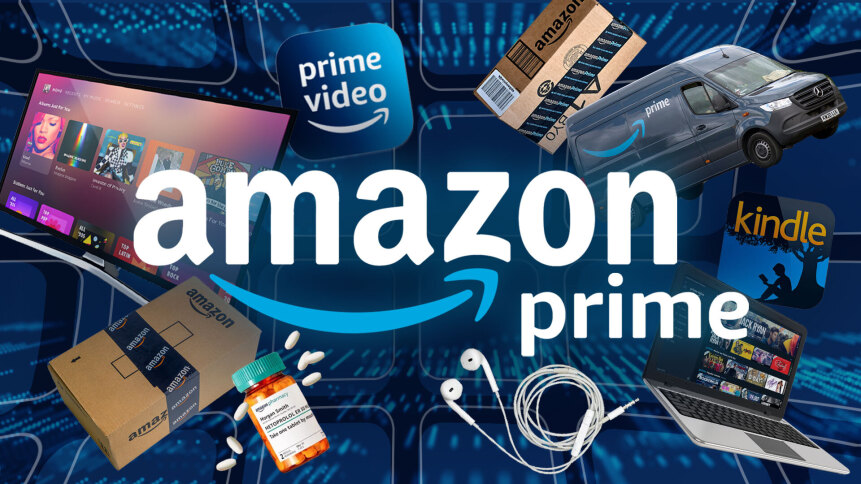
Image source: pcmag.com
This is a full-on membership that gives customers free two-day shipping, exclusive discounts, streaming on Prime Video, and even access to books through Prime Reading. Amazon packs so much value into the membership that it feels essential for regular Amazon shoppers.
Why this loyalty program works
- Members save time and money on shipping, enjoy free content, and get a heads-up on deals.
- By giving members perks across multiple areas, Amazon creates an “ecosystem” that keeps customers coming back.
- Prime’s early access to new items is a major draw, creating a VIP experience for members who feel like they’re getting a special edge.
6. Chewy Autoship
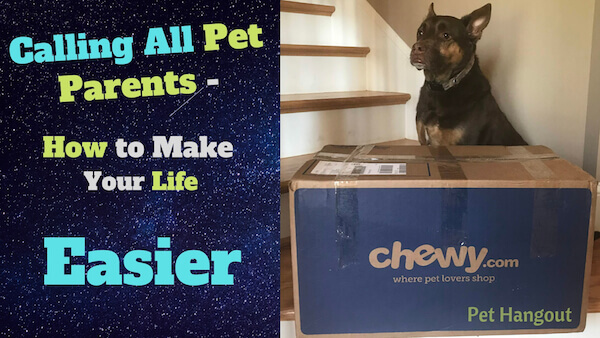
Image source: pethangout.com
Chewy Autoship rewards loyal pet parents by offering discounts on scheduled, automatic deliveries of pet food, treats, and supplies.
Why this loyalty program works
- The program’s discounted pricing gives customers real savings on every order.
- Chewy personalizes reminders and recommends add-ons based on past purchases, showing they know their customers’ needs.
- The convenience of automatic deliveries takes the hassle out of reordering. For example, if someone buys cat food regularly, they can set up a monthly Autoship and get a discount for life, plus never worry about running out.
Healthcare & wellness loyalty program examples
7. Walgreens Balance Rewards

Image source: cre8tivecompass.com
Walgreens rewards members with points for every dollar spent on purchases and even for engaging in healthy activities, like walking or tracking their health stats.
Why this loyalty program works
- The program meets customers where they are, creating real incentives for healthier lifestyles.
- Walgreens goes beyond typical loyalty by linking rewards to wellness, which keeps customers motivated and engaged.
- Customers get extra points just for tracking their steps in the Walgreens app, making it feel like Walgreens is right there cheering them on.
8. CVS ExtraCare

Image source: hip2save.com
ExtraCare members earn points on nearly every purchase and receive personalized coupons based on frequent purchases.
Why this loyalty program works
- CVS takes loyalty to the next level with a personal and straightforward approach.
- ExtraCare Pass subscribers receive monthly rewards, which add up to real savings over time.
- The personalized coupons based on purchase history make members feel like they’re getting offers made just for them. For example, if a customer frequently buys vitamins, they’re likely to see discounts on supplements.
Financial services loyalty program examples
9. Chase Ultimate Rewards
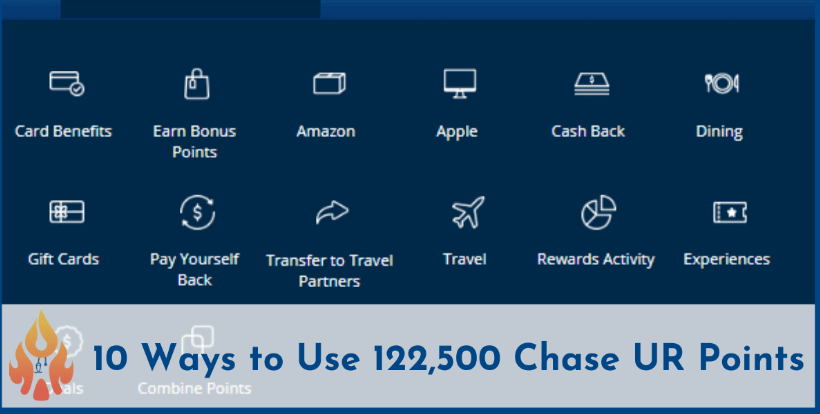
Image source: physicianonfire.com
Chase cardholders earn points for purchases, which can be redeemed for travel, cashback, gift cards, or even purchases on Amazon.
Why this loyalty program works
- The freedom to use points wherever they matter most keeps Chase customers hooked.
- The program seems designed to fit any lifestyle — rewards work for multiple types of shoppers.
- Members with Chase Sapphire Reserve earn 3x points on dining and travel, giving foodies and jet-setters a reason to stay.
10. American Express (Amex) Membership Rewards

Image source: uthrive.club
Amex’s rewards program offers cardholders points on purchases, which can be redeemed for flights, hotels, gift cards, and more.
Why this loyalty program works
- Amex knows its customers appreciate a little luxury, delivering rewards that go beyond points.
- AmEx’s Platinum card offers a $200 annual airline fee credit and Global Entry/TSA PreCheck credit, making travel easy for members.
- The program provides members with high-end experiences like VIP event access and airport lounge passes, creating value far beyond regular spending.
Business-to-business loyalty program examples
11. Salesforce Premier Success

Image source: appexchangeguides.relayto.com
Salesforce offers rewards for loyal clients through priority support, training, and exclusive events. Everything is covered, including onboarding, product adoption strategies, governance, automation, and artificial intelligence (AI).
Why this loyalty program works
- Premier customers have access to over 260 expert coaching sessions across various Salesforce products.
- Premier clients receive 24/7 global phone support and a 25% discount on instructor-led training and certifications.
- Clients benefit from individualized onboarding experiences. An onboarding specialist works closely with the customer to understand their business goals and align them with Salesforce product capabilities.
12. HP Partner First Program
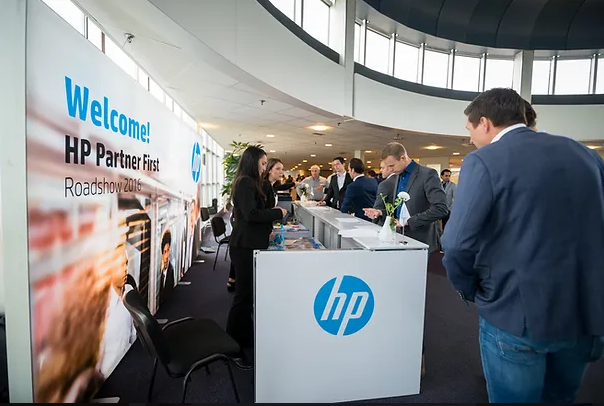
Image source: intracon.com
HP’s loyalty program rewards resellers with benefits like sales incentives, access to exclusive products, and technical support.
Why this loyalty program works
- Partners can earn additional rebates by meeting specific sales targets or by focusing on strategic product lines.
- Resellers get the chance to showcase new HP innovations in their portfolios, attracting tech-savvy clients interested in the latest industry advancements.
- Partners looking to enhance their value proposition get to work with HP to develop tailored solutions for specific industries, placing themselves ahead of the competition.
Seven creative customer loyalty program ideas
These ideas can help you stand out from the crowd and build lasting relationships that turn one-time buyers into loyal brand advocates:
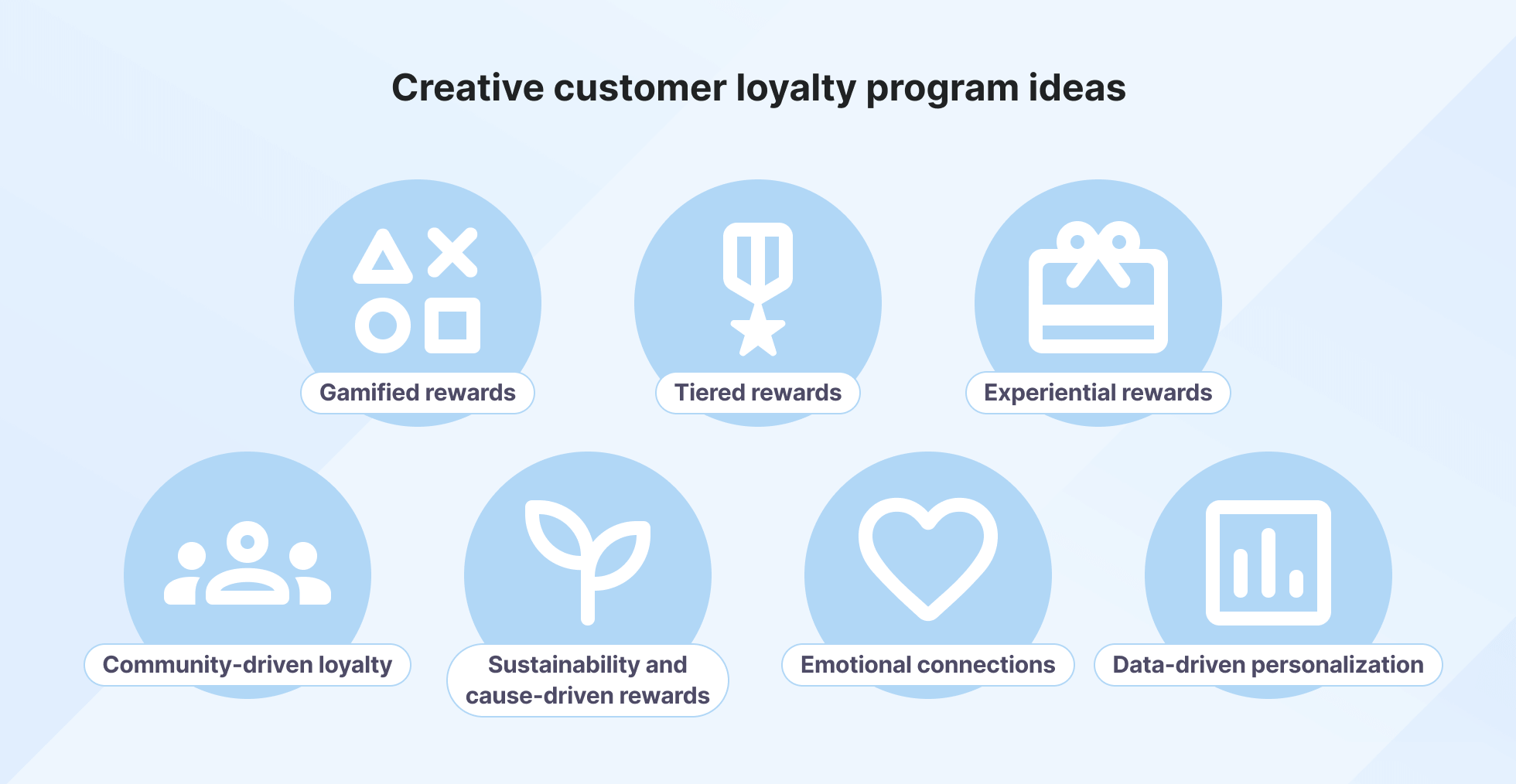
Gamified rewards
Think about creating levels, challenges, or milestones that customers can achieve to earn extra points or exclusive perks.
Example: A coffee shop could have levels like “Espresso Explorer,” “Cappuccino Connoisseur,” and “Latte Legend.” Moving up levels might earn them bigger discounts, free drinks, or access to special products.
Tiered rewards
Start clients off with basic benefits. As they continue to engage, let them advance through higher tiers with increasing rewards. This encourages ongoing commitment as customers are motivated to reach the next level for better perks.
Here’s a basic tiered structure for a fashion retailer.
- Bronze tier (entry-level): Customers join the program for free and get 5% off their first purchase, along with basic perks like early sale notifications.
- Silver tier (mid-level, must spend $300 or make five purchases within a year): Members who reach Silver status receive perks like 10% off on all purchases, free shipping on orders over $50, and access to exclusive seasonal previews.
- Gold tier (top level, must spend $1,000 within a year or make 15 purchases): Gold members enjoy premium perks, such as 15% off, free shipping on all orders, priority customer support, invitations to VIP events, and a birthday gift credit.
Experiential rewards
Instead of offering discounts or free items, consider offering unique experiences as rewards, such as early access to products, invites to special events, or virtual sessions with brand experts.
Community-driven loyalty
Encouraging members to join a community (an online forum, social media group, or app space) deepens brand loyalty as customers connect with each other. Draw them in by including community sign-up links in multiple touchpoints where customers are already engaged, like order confirmation emails, thank-you pages, or post-purchase pop-ups.
Emotional connections
Nothing keeps customers hooked on a brand more than emotional ties, and no brand does it better than Starbucks. When customers reach a certain loyalty level, Starbucks celebrates by sending them a birthday reward — usually a free drink or treat.
But it doesn’t stop there. Starbucks also personalizes the experience by addressing customers by name on the app, remembering their go-to orders, and offering early access to seasonal drinks and offers. If that doesn’t build brand loyalty, nothing will.
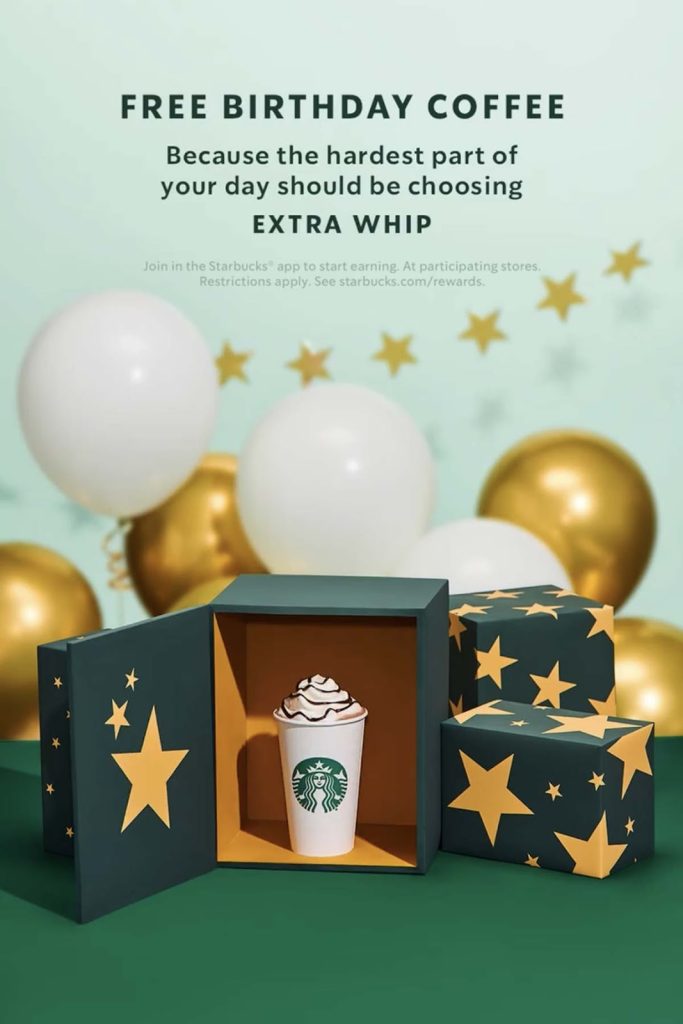
Image source: coffeeatthree.com
🏆 You can easily implement this idea yourself by setting up an automated system that tracks customer birthdays, favorite items, and loyalty milestones. On their one-year anniversary with your brand, trigger a personalized birthday reward message or an appreciation email.
Sustainability and cause-driven rewards
You can offer loyalty points or discounts for eco-friendly purchases, donate a portion of sales to charitable causes, or reward sustainable actions like bringing in reusable bags. This alignment with customer values creates a deeper bond with those who prioritize social responsibility.
Data-driven personalization
By analyzing customer preference and purchase history insights, you can offer customized recommendations, exclusive offers, or relevant rewards. When loyalty programs feel tailored to individual needs, they are more engaging and increase the likelihood of repeat customers.
Top customer loyalty solutions
Customer loyalty solutions have come a long way. Today’s vendors offer tech-driven, customizable solutions that help you reward and retain customers in meaningful ways.
Options suit every business scale and style, and most vendors provide features like personalized offers, social media integrations, and even AI-driven insights that can help predict customer behavior. If you’re looking to stand out from the crowd, crafting a customer journey that sticks is the only way.
Key vendors in the loyalty program market
The following platforms offer tools for creating and managing your own loyalty program. In addition to software vendors like Yotpo, Smile.io, and LoyaltyLion (which we already discussed in this article), FiveStars deserves an honorable mention.
FiveStars combines loyalty programs with marketing automation, aiming to help local businesses increase customer retention and engagement.
These are the best options if you’re looking for end-to-end loyalty solutions, including strategy development, program management, and analytics.
- Kobie: Delivers comprehensive loyalty services, from strategic consulting to technology solutions.
- Epsilon: Offers data-driven loyalty solutions, integrating marketing services with advanced analytics to build personalized customer experiences.
How to choose the right customer loyalty solution
Here are the key factors that should guide your decision when choosing your loyalty program vendor.
Budget
Look for features that align with your goals and budget. Those that include extensive customization options come at a hefty price, so consider if a more basic solution might meet your needs.
Consider providing gift cards or limited-time discounts as rewards with platforms like Square. Their affordable setup is great if you prefer to reward customers directly through purchases rather than complex systems.
Scalability
As your business grows, so should your loyalty program. Look for a platform that can scale alongside you without requiring a complete overhaul. LoyaltyLion has a modular design, allowing you to start with basic loyalty features (e.g., points, referrals) and expand into more advanced options (VIP tiers, email integration, behavioral analytics).
Integration options
Choose a loyalty solution that fits into your existing tech stack — whether that’s your customer relationship management system, e-commerce platform, or POS system. For instance, Fivestarts works well for physical stores because it integrates well with POS systems like Clover, Square, and Toast.
Analytics
The right platform will have analytics tools to help you understand customer behavior, track engagement, and identify trends. Customer behavior tracking, engagement metrics and segmentation tools are only a few of the essential features you should be on the lookout for.
User support
Great service for you is just as important as great service for your customers. Look for vendors with a solid support reputation, especially if your team isn’t super tech-savvy. Places like Reddit or industry-specific forums provide real-world insights from other businesses, showcasing honest feedback on vendors’ support quality.
Future trends in loyalty solutions
Loyalty programs are constantly evolving, and the future is packed with exciting innovations that can make your customers feel like VIPs. Here’s the latest in loyalty development.
- AI-powered personalization: Imagine having a loyalty program that “knows” what your customers love. It can track buying habits and recommend products that fit each customer’s taste. For example, if a customer always buys skincare products, they could get exclusive early access to new skincare lines or surprise samples.
- Blockchain loyalty programs: Sounds a bit tech savvy, but think of blockchain as a way to make loyalty points easier to manage and exchange between brands. Let’s say you run a coffee shop, and customers could redeem points not just with you but at nearby stores. Blockchain can securely store these points so they’re transferable.
- Mobile integration: It really comes down to convenience. Push notifications for special rewards or reminders when customers are near your store to drive more engagement. You can even gamify the experience by setting up challenges (like “Visit 5 times in a month and earn double points!”).
Improve your customer loyalty management
When customers feel valued, they’re more likely to stick around, spread the word, and become true advocates. This is why companies that implement loyalty programs report a 15-25% increase in revenue.
But the benefits don’t stop with numbers. A well-designed and implemented loyalty program enhances customer satisfaction and trust, turning your clients into your best and most authentic promoters.
So, if you’re looking to build a community of loyal customers who see your brand as a favorite — not just a fallback — consider adding a loyalty program to your toolkit. It’s a simple way to create a customer base that feels invested in your brand’s success.
Related articles
SMS opt-in and opt-out: A guide to effective messaging compliance
Having accessible SMS opt-in and SMS opt-out mechani...
6 Reasons customers prefer texting over calling
Ironically, people prefer to use smartphones, not fo...
Crafting a winning sales pitch: 22 Proven examples to inspire you
Discover our selection of sales pitch examples that ...
Successfully outsource customer service using 8 tips we tested ourselves
Poor customer service impairs user experience and un...
10 Best customer service books to read in 2025
Creating the best customer experience starts and end...




